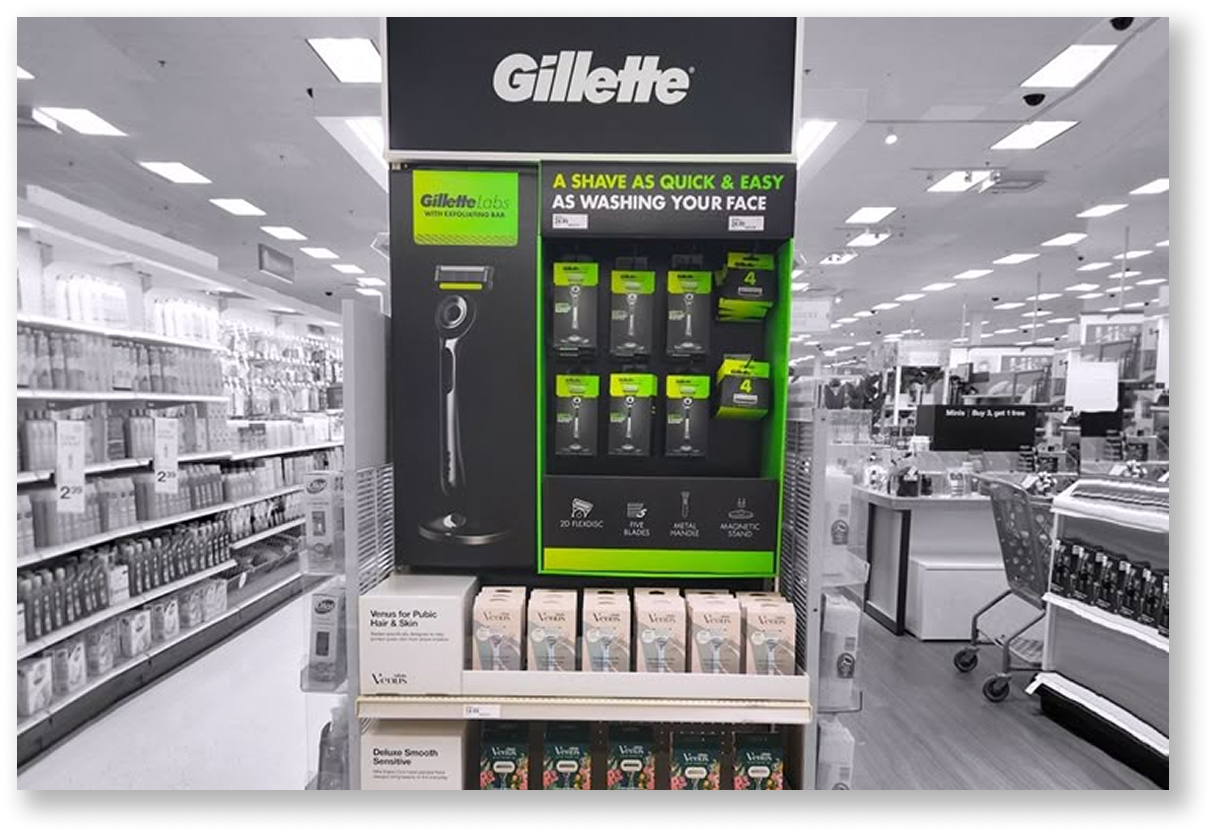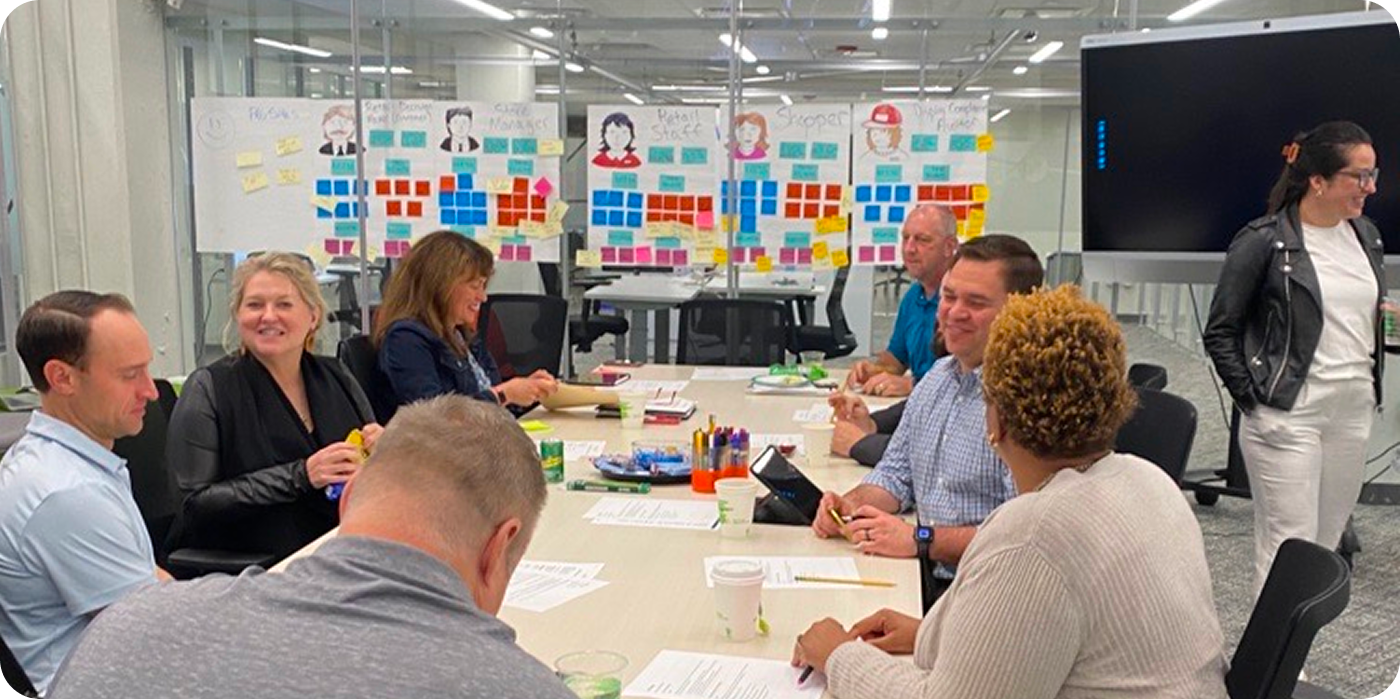P&G


In-store display execution at P&G falls short of expectations, despite being a high-cost, high-effort investment. Compliance issues—ranging from poor setup to lack of restocking—hinder the intended impact of displays, which are meant to drive awareness, promotions, and sales. This inefficiency is amplified by fragmented processes, conflicting goals across teams, and lack of real-time data on display performance.
Reimagine the world of in-store physical displays by uncovering root challenges and generating creative, future-ready solutions that address compliance, sustainability, and usability across the entire lifecycle—from planning to setup.
Design a creative solution to improve the in-store display experience
Miro
UX Designer (Researcher)
Strategist: Supported during the workshop and interviews.
UX Principal: Provided guidance during research.
Myself (UX Designer): Contributed to research and workshop activities, led solutioning efforts.
1.5 months
To deeply understand the problem space, we created six archetypes based on interviews with internal stakeholders and retail-side employees: P&G Sales, Retail Decision Makers, Store Managers, Retail Staff, Shoppers, and Display Compliance Auditors. Each persona included goals, needs, and pain points, which were also mapped into empathy maps and pain point summaries.
We conducted observational research in-store to validate assumptions and uncover unspoken issues. We visited stores, studied display conditions firsthand, and interviewed retail employees responsible for setup. This method revealed insight into usability gaps, poor setup instructions, and lack of accountability—challenges that weren’t mentioned in stakeholder interviews alone.
We led a two-day design thinking workshop in Providence, RI with the P&G team to align around opportunities and reimagine the future of displays. Activities included:
From this workshop, we aligned on seven experience principles that guided our solutioning:
We mapped these principles to each stage of the display lifecycle—from planning and production to fulfillment and compliance—surfacing dozens of opportunities to improve the system holistically.

From these insights, we developed three integrated solutions that build on one another to address pain points across the full lifecycle of in-store displays:
Each solution was designed to address real pain points uncovered in research—from store manager time constraints to shopper dissatisfaction and sales team misalignment—creating a multi-layered, scalable future system.
One of the most impactful parts of this project was conducting observational research in real stores—a first for me. It revealed the operational messiness that often gets overlooked in interviews and showed how critical it is to design not just for users, but for environments and workflows.
If I were to do one thing differently, I’d present the solutions more visually. Including even rough mockups or storytelling artifacts might have helped stakeholders better envision the future-state experience and how it solves their day-to-day problems.
Overall, this was an extremely comprehensive and layered research project, and a great example of how digging deep into people, systems, and real-world friction can uncover creative, meaningful opportunities for change.